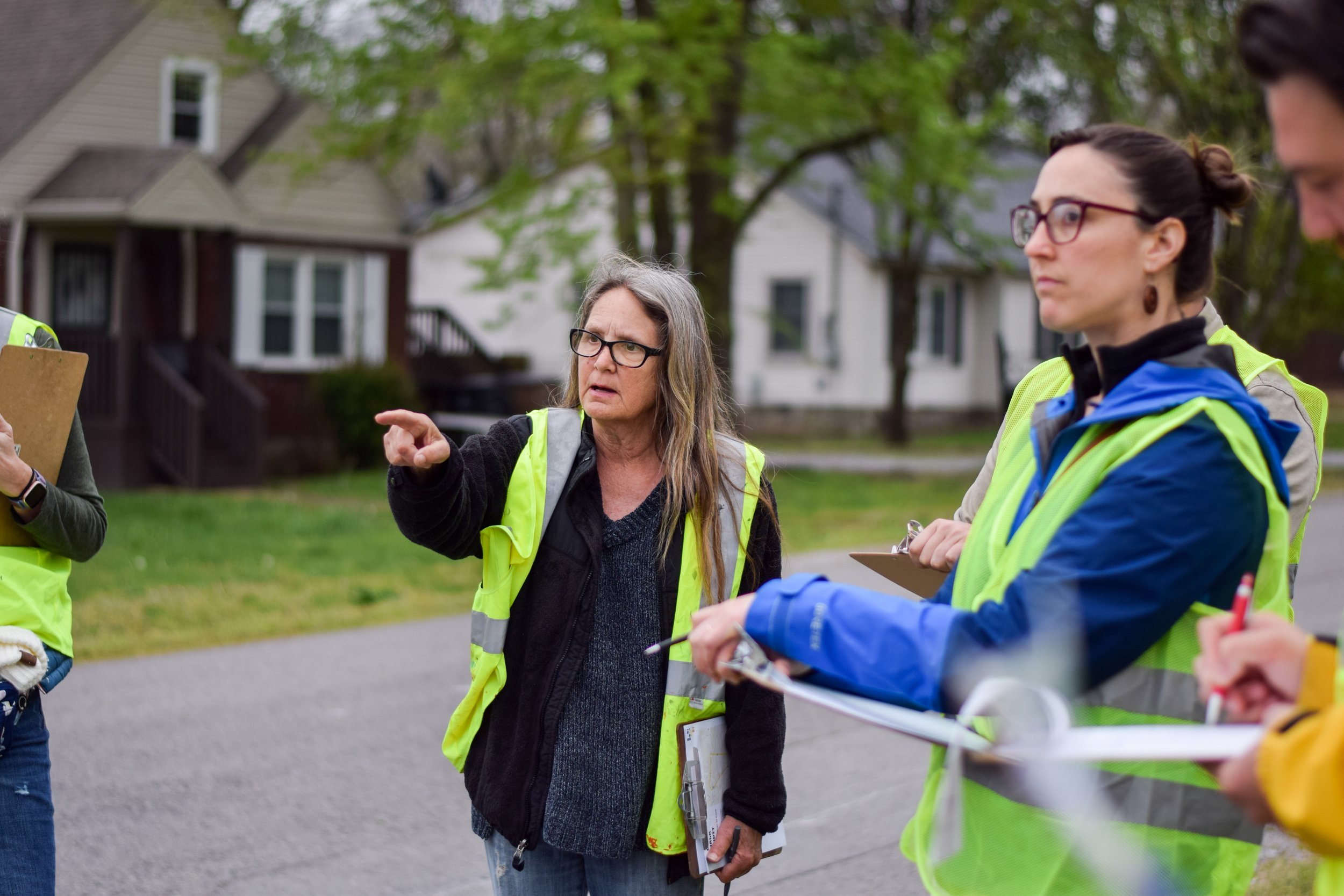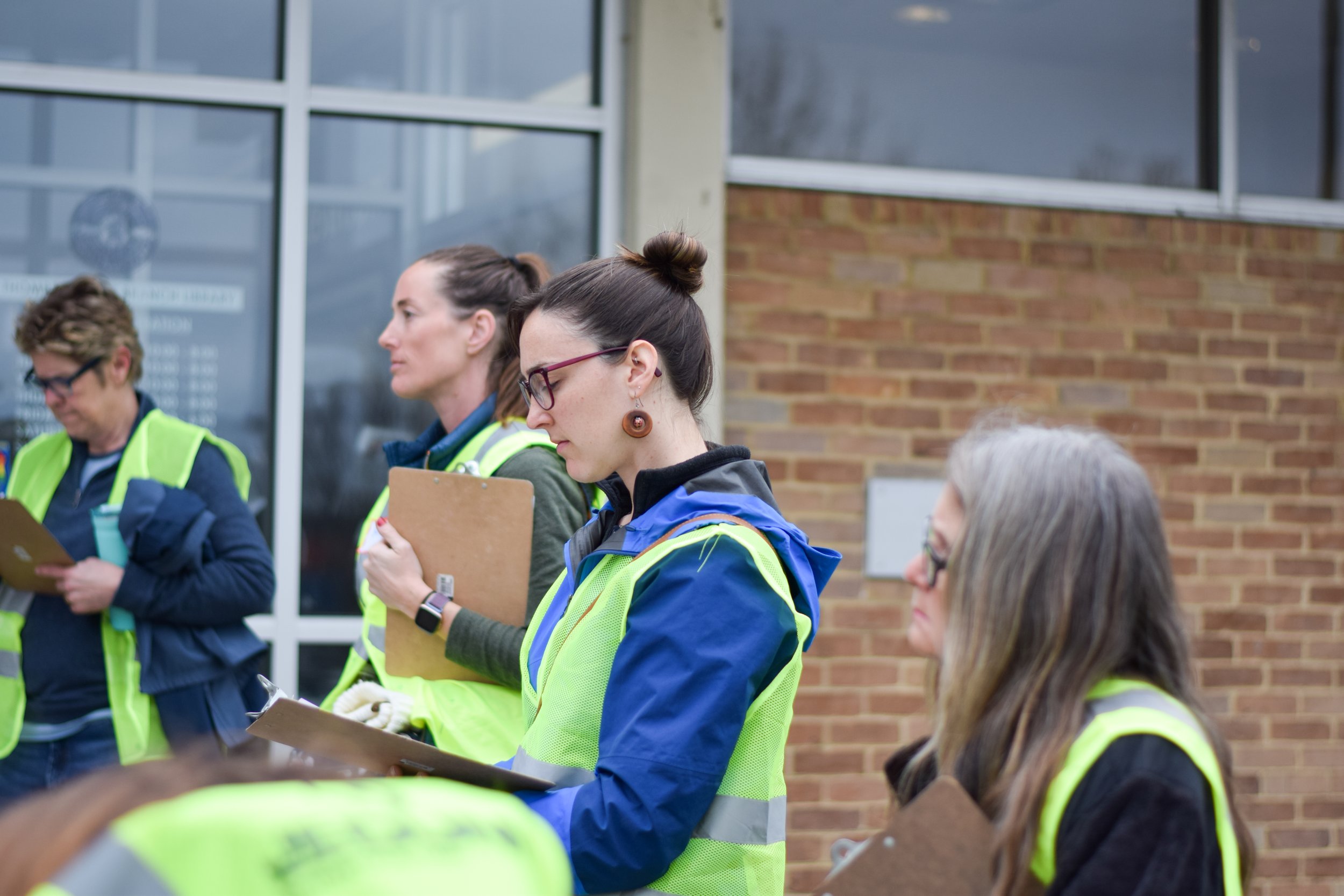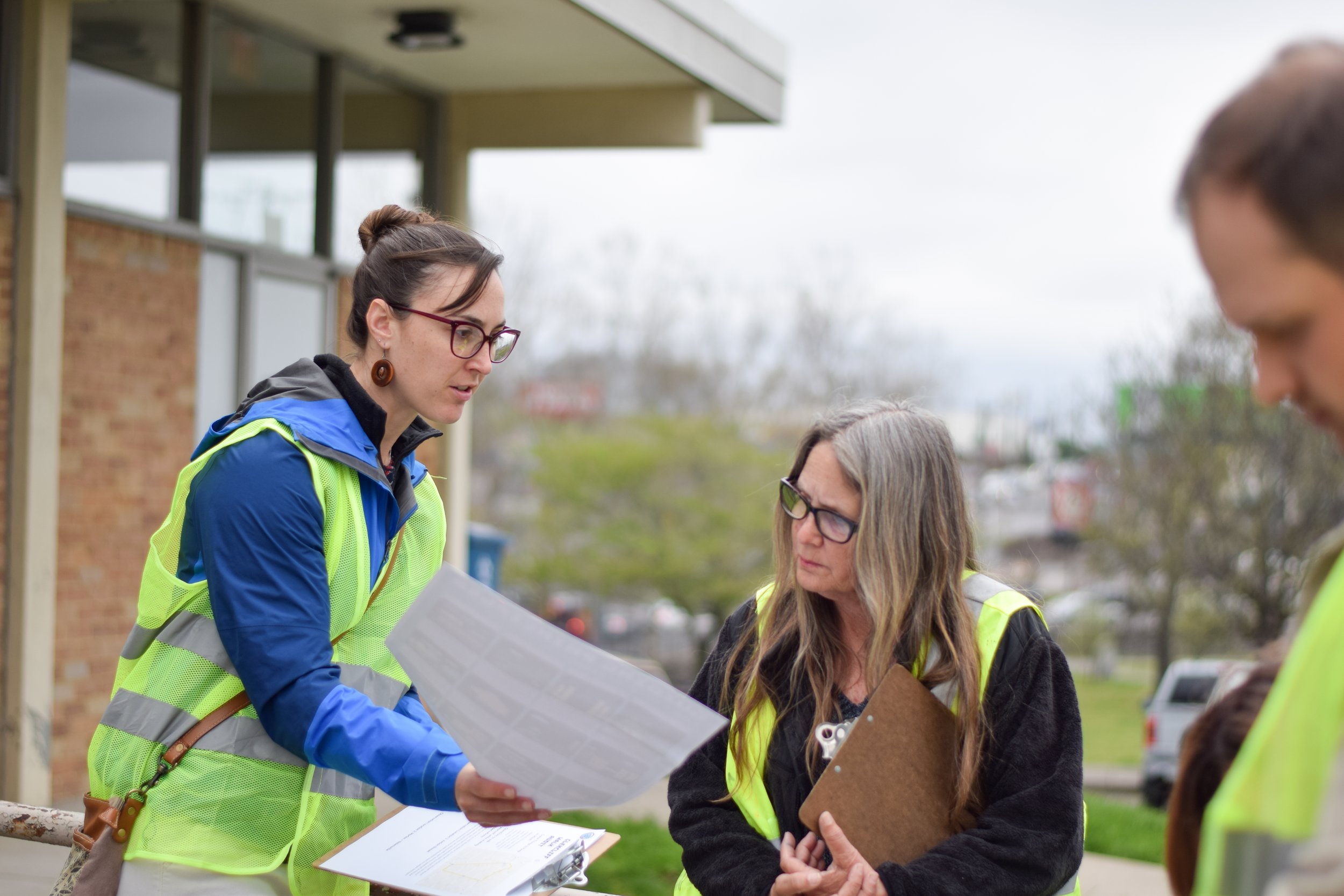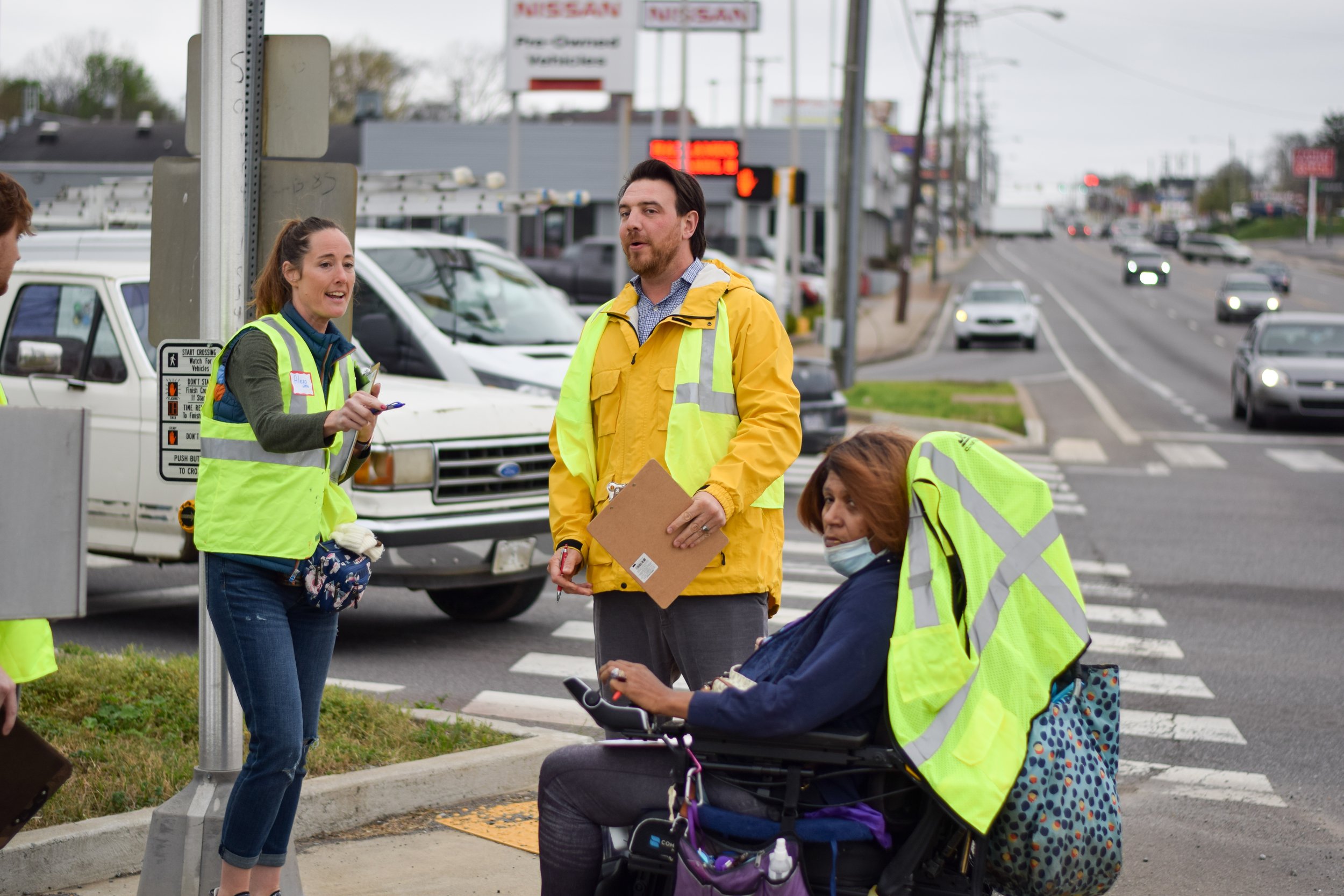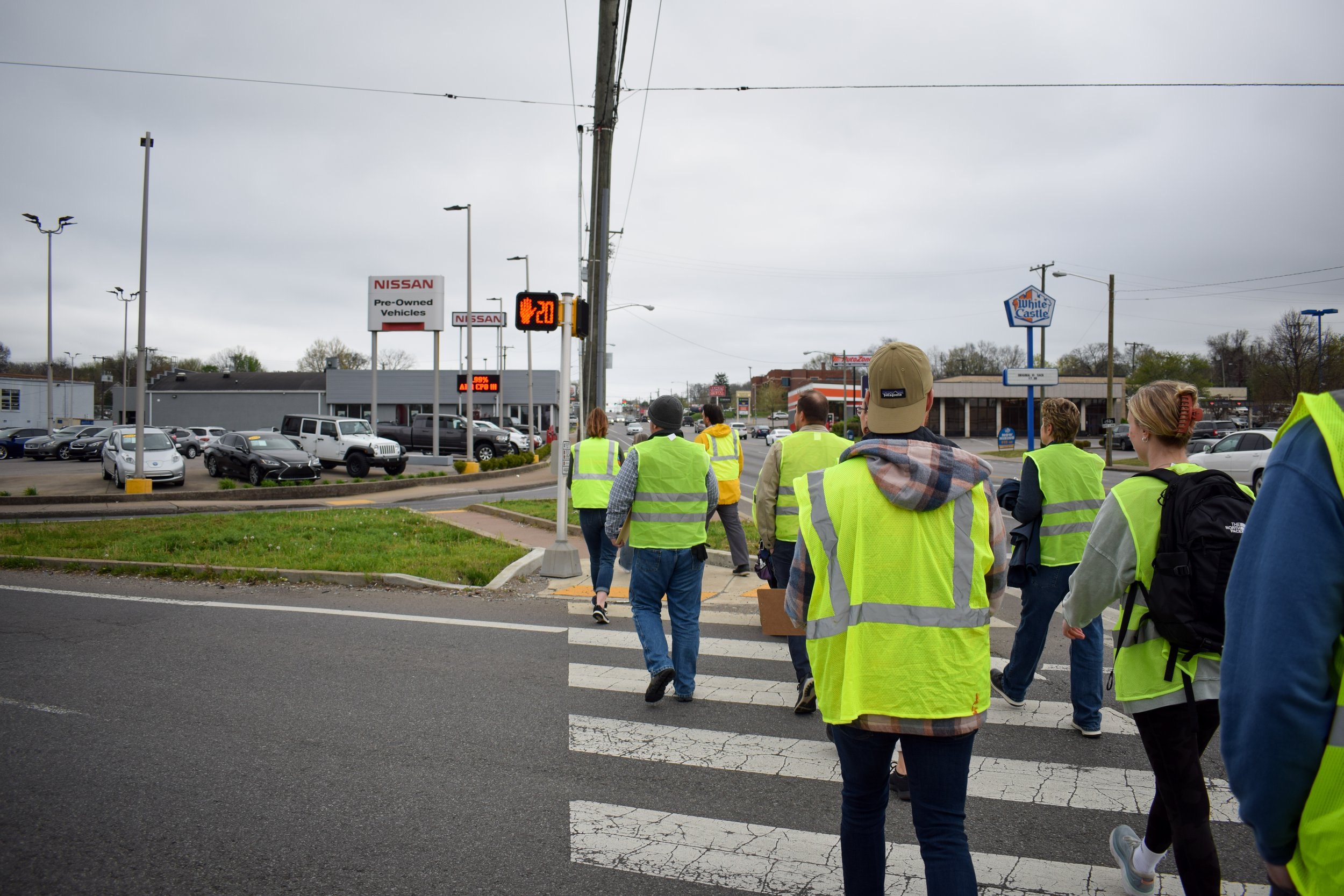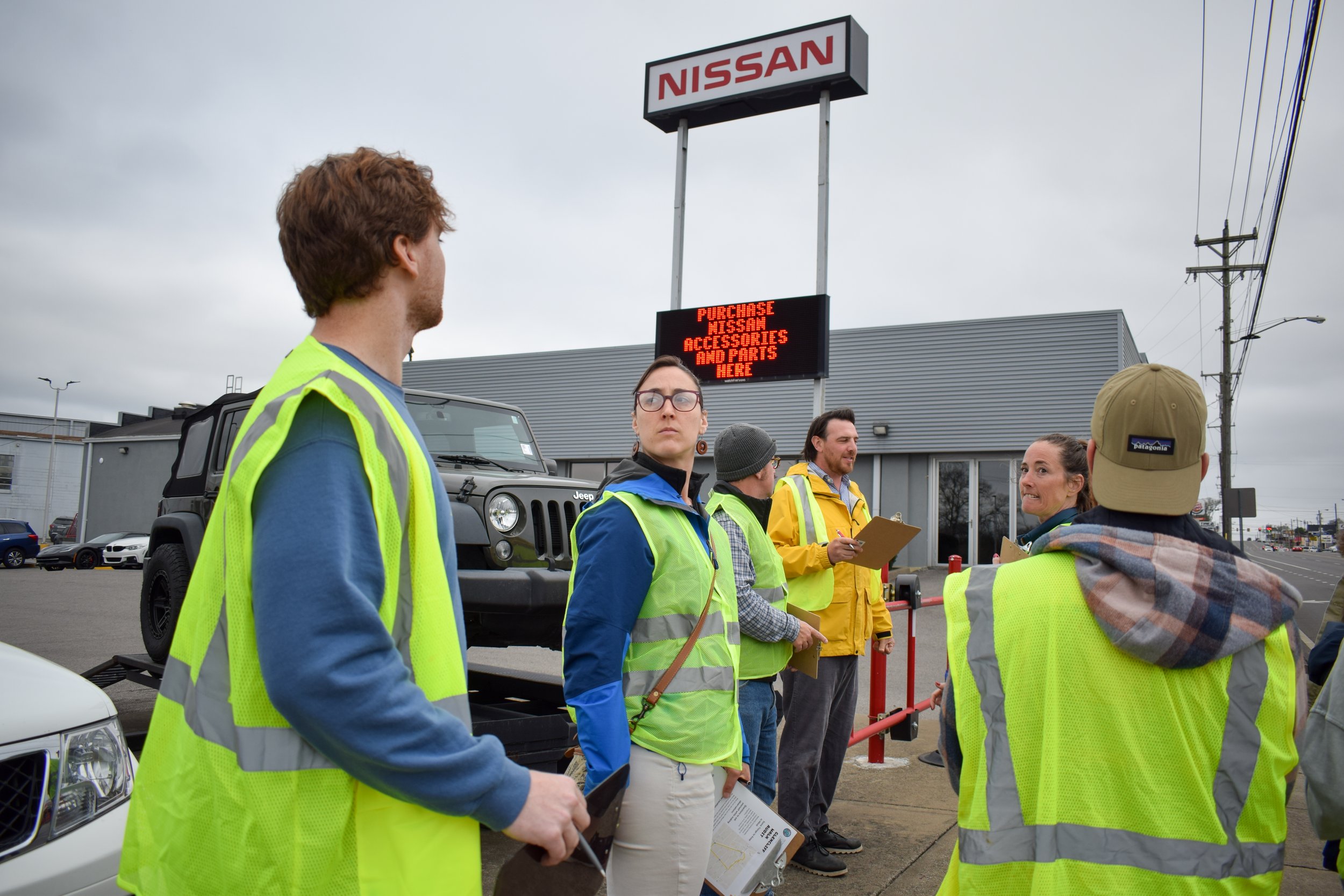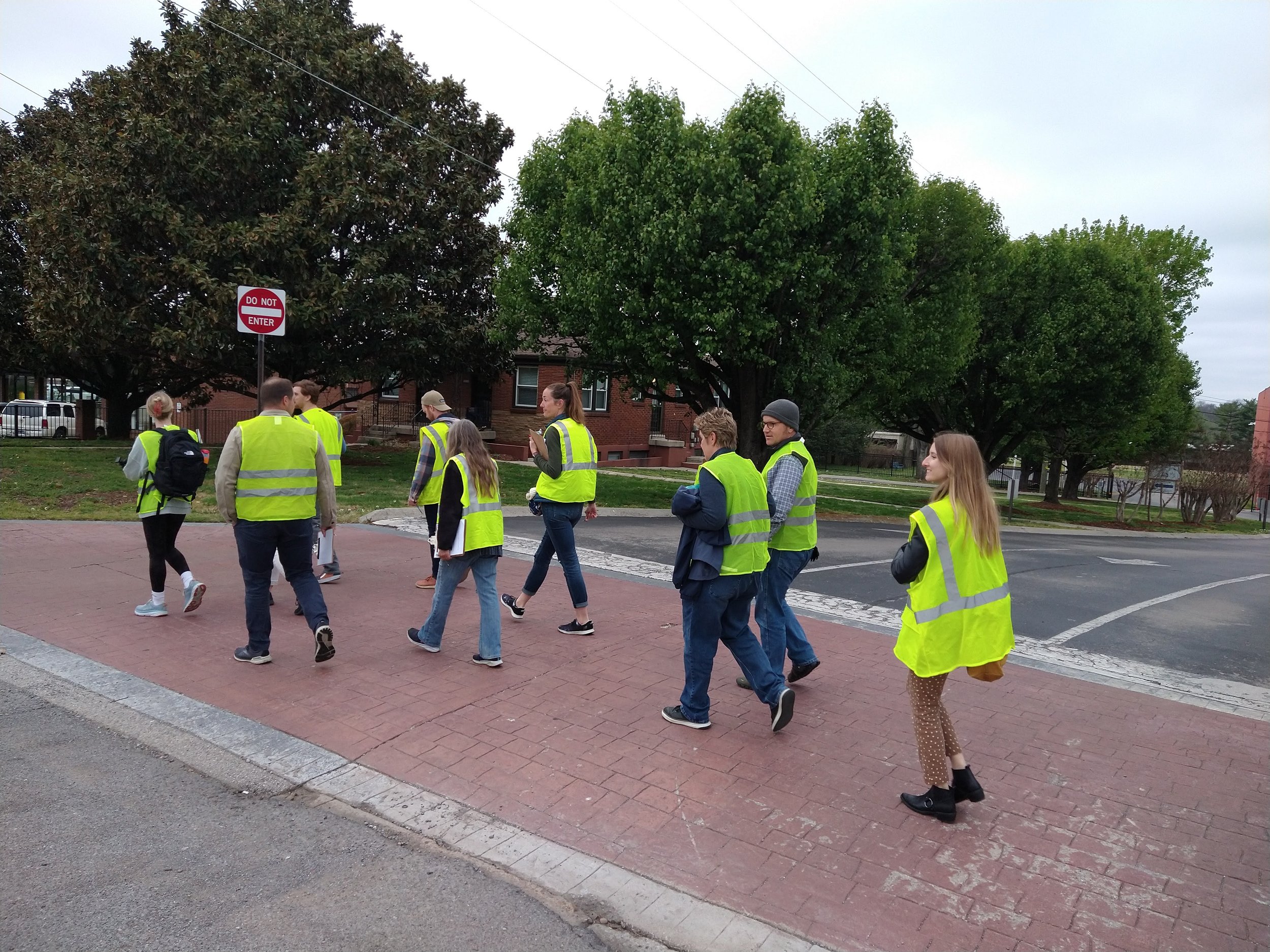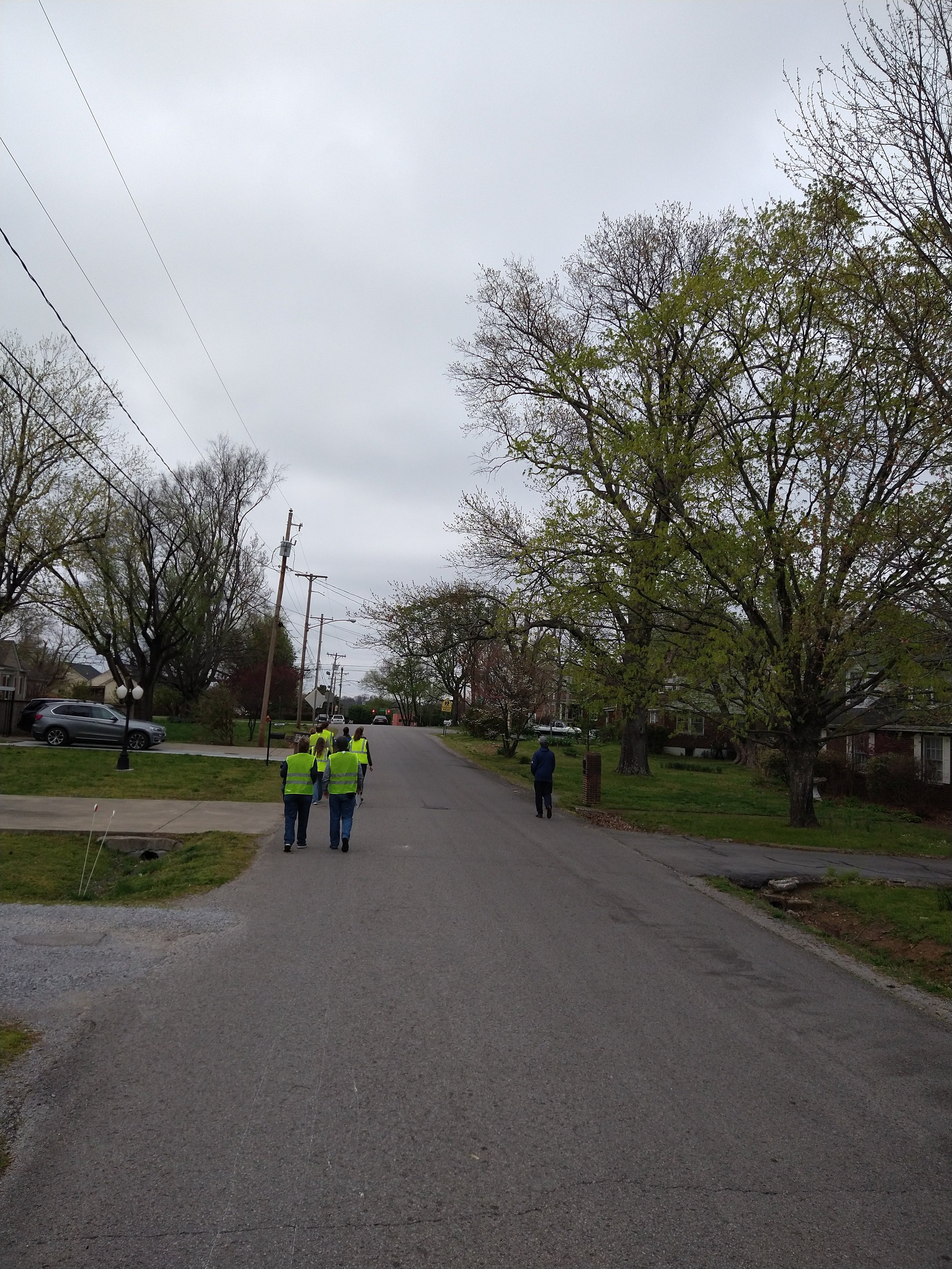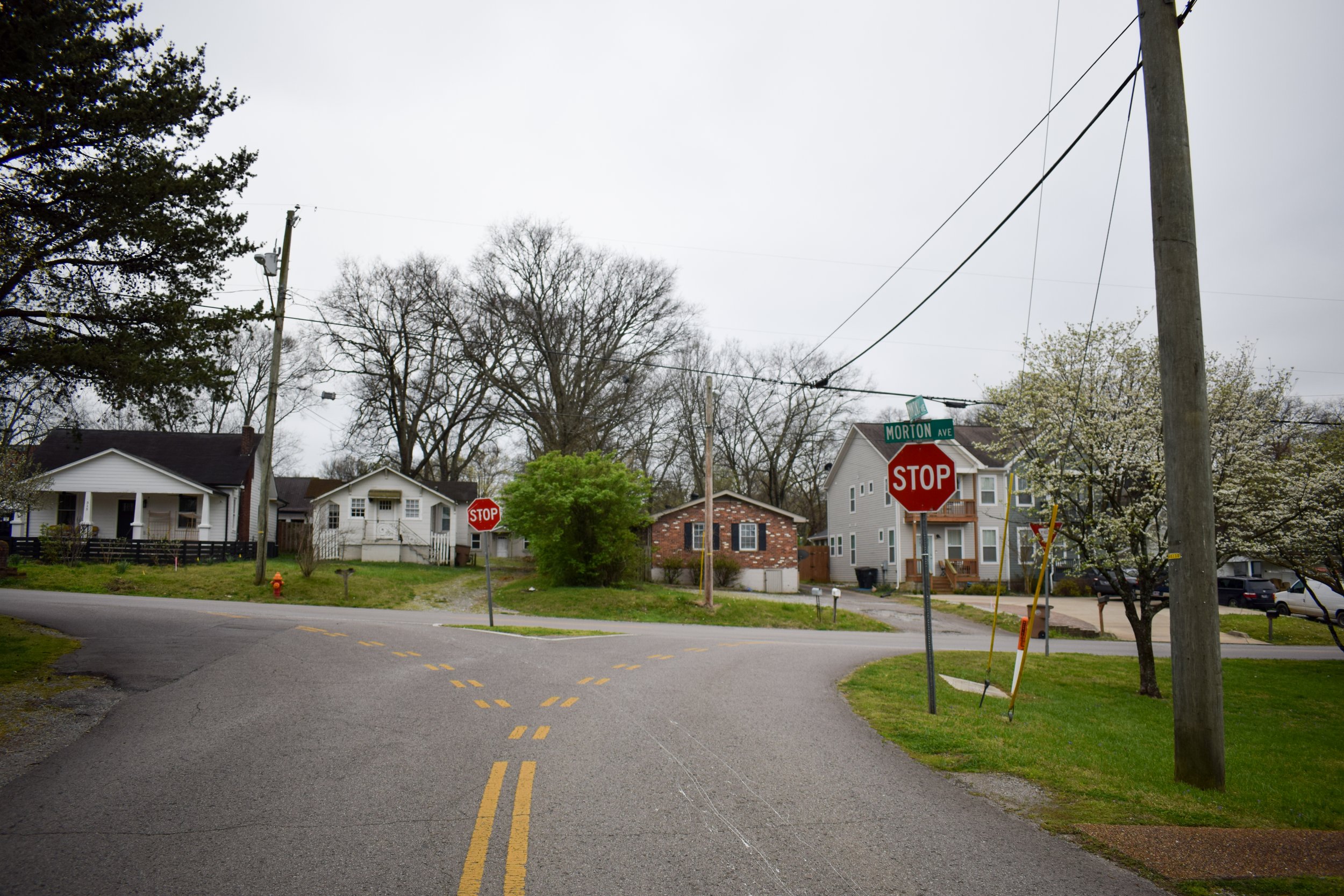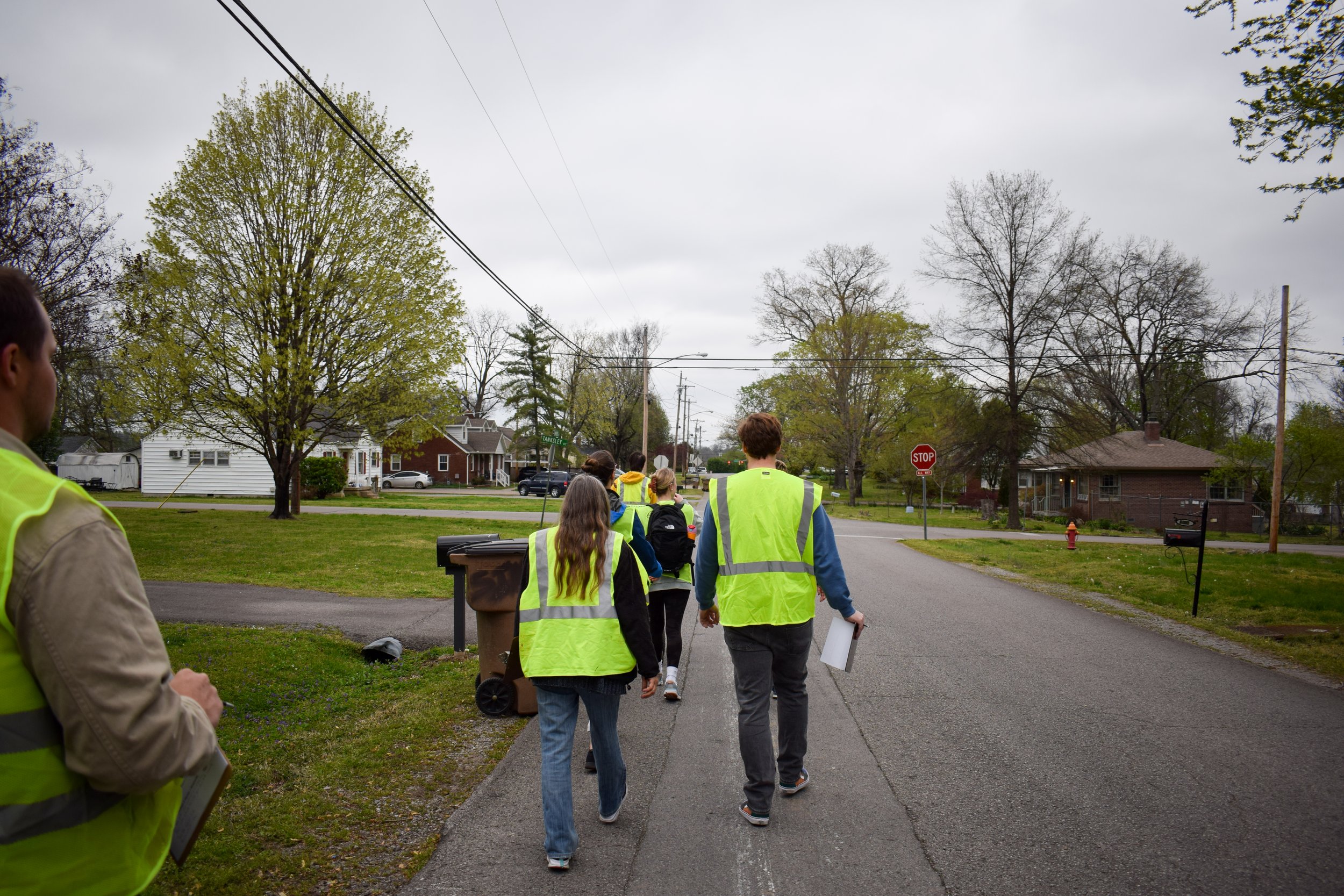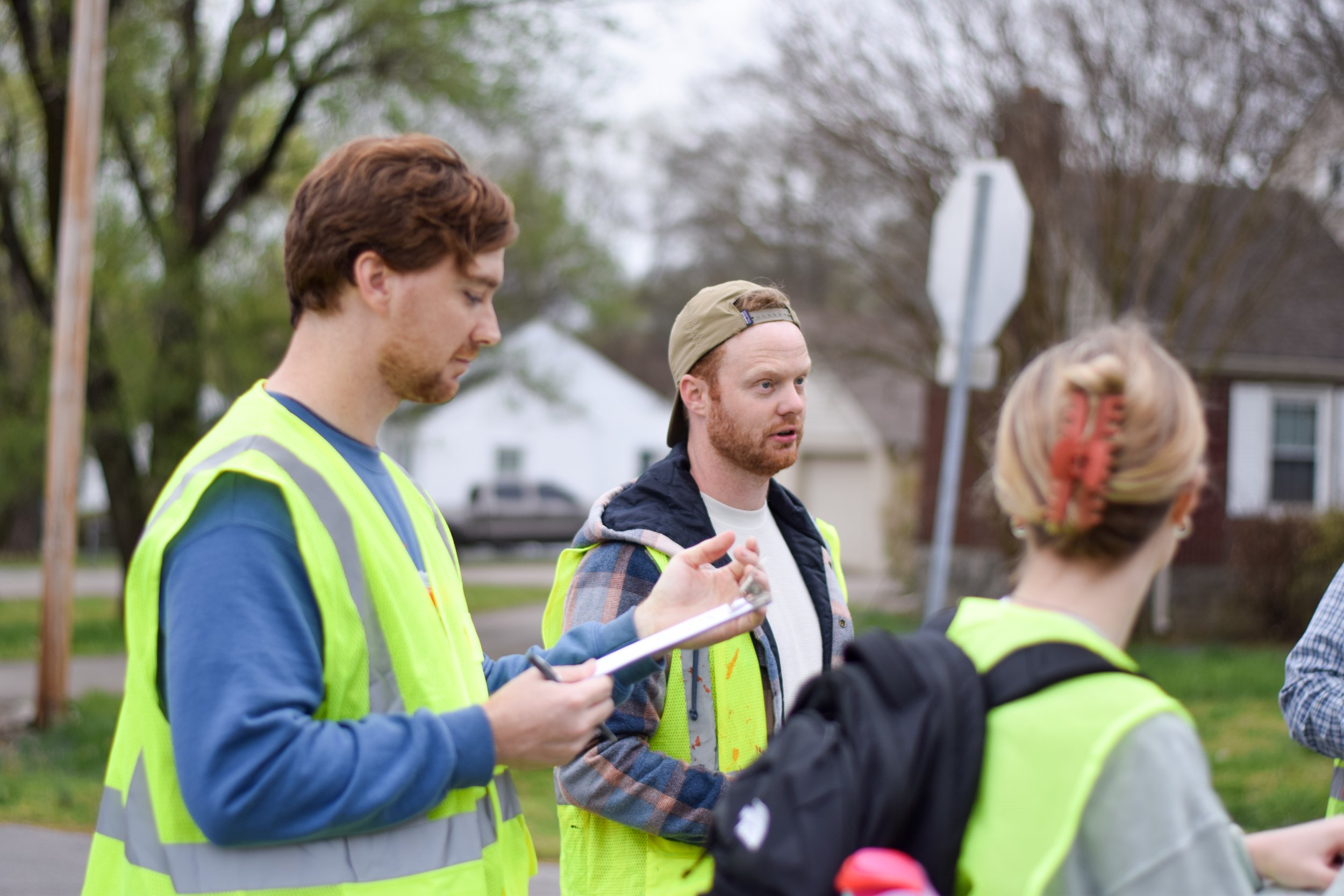Glencliff Walking Discoveries
Civic Design Center walks the Glencliff Neighborhood with community members to identify assets and opportunitiesBy Kate Andrews, Community Engagement Intern
7 min read A review of the Civic Design Center’s walk audit with the Glencliff community highlighting the strengths of the neighborhood and discussing some of the opportunities and concerns from the pedestrian level.
The Civic Design Center is excited to share that we are currently revamping our neighborhood walk audit process!
What is a Walk Audit?Neighborhood Walk Audits are walks through your neighborhood with a more inquisitive eye. Neighbors and community stakeholders come together to assess its most valuable assets and most essential areas for improvement. This is an important tool in urban design as neighbors are the experts of their own neighborhoods!
During a Walk Audit, neighbors are guided to look for certain aspects of their neighborhood like greenspaces, public art, and safety as they relate to our Guiding Principles for Civic Design; this is what makes this walk auditing process unique to the Civic Design Center. Neighbors have the opportunity to voice their unique perspectives on these topics — and anything else on their minds – during this process. We like to work with neighbors to craft walking routes that include roads and pit stops that hit key areas for positive and negative reactions— giving neighbors this opportunity for sharing their lived experiences.
These neighborhood Walk Audits are welcome to ALL people no matter one’s knowledge of urban planning, time spent in the area, mobility, etc. Everyone is encouraged to attend these walking tours and share their insights. Neighbors might even learn from each other along the way.
Neighborhood Evaluations with the Glencliff CommunityThis is an interactive map with some of the comments and observations from the walking audit.
We recently had the opportunity to walk around a section of Glencliff with eight neighbors while stopping along the way to discuss key areas for improvement. After meeting at the library for a quick introduction to the process, we were able to walk down Nolensville Pike, Simmons Ave – a frequently used cut-through street, and Thompson Lane. Although this route is not a complete representation of the area, it allowed us to see some important areas of interest like the often-congested turn lane on Nolensville and the lack of sidewalks in the neighborhood.
This walk was inspired by a neighbor who was interested in our Neighborhood Assessment Toolkit. The Design Center team has been working on making the assessment more “neighbor-friendly” to allow for neighborhoods and individuals to complete the assessment independently. After talking about the assessment, we decided that a walking audit was a great first step to help understand how to improve the toolkit to be used in neighborhoods across Nashville.
Mobility
Experiencing neighborhoods while walking can encourage people to think about streets from the pedestrian perspective, and think about ways to improve neighborhood mobility.
What happens when traffic calming measures are ignored?
On this 1–2 mile walk, the neighbors were able to share their concerns about the area. After reviewing their completed audit worksheets, their concerns outweighed their positive comments about 2:1. Their biggest concerns were focused on streets and pedestrian infrastructure, particularly sidewalks and safe crossings. In conjunction with the lack of safe infrastructure, neighbors explained that the prevalence of drag racing on the major streets is putting pedestrians at risk.
One resident pointed out that the fences to Thompson Park had just recently been replaced due to vehicles crashing into them and flying into the park. One of the biggest concerns was the neighborhood's history with traffic calming measures. “When they installed a stop sign, people just ignored it, and it was eventually removed. Then when speed cushions were installed, people would just drive into other neighbors’ yards to avoid them,” a fellow neighbor shared.
Make it stand out
Many participants identified park and community spaces as both a positive feature of the neighborhood and an opportunity for improvement.
Further, certain apps like Waze redirect cars (and even some semi-trucks) through the neighborhoods to avoid the traffic on Nolensville Pk and Thompson Ln. Residents explained how these cars will then speed through the neighborhoods making it very unsafe for neighbors especially when considering the lack of sidewalks in the area. One neighbor shares, “traffic speeds through and you have to move to get out of the way.”
Most of the remaining concerns were focused on cleanliness and multimodal transportation, including bike lanes. Bike lanes suddenly stop at the intersection of Nolensville Pike and Thompson Lane, but the bike lanes don’t seem to feel safe as it is. Additionally, residents shared that the area has a high water table and because of the way the neighborhood was zoned, many areas are already prone to flooding. Once litter clogs the drains, it becomes an even bigger issue.
Why is this important?
During this process, the neighbors shared what they loved about Glencliff. They spoke highly of the greenspaces in the area especially with it being one of the only affordable areas in Nashville where homes have backyards. They also expressed their love for the vibrant international culture in the area along Nolensville Pike as well as Glencliff’s proximity to many key locations in Nashville like BNA International Airport, the soccer stadium, and downtown.
With all of these attractive features and more, residents expressed the sentiment that it would be a prime location for developers. Their hope through the walk audit and neighborhood assessment process is to help advocate for the neighbors’ needs so future developers and Metro Nashville could come together to make an even more desirable area!
While some of the traffic calming measures have failed in the past, the neighbors proposed that a solution needs to be discovered. Speed cushions in combination with other pedestrian improvements, like delineators and eventually sidewalks should make a dramatic impact on the neighborhood. Neighbors also proposed the idea of hosting a trash clean-up day to encourage community members to pick up litter before it gets caught in the drains and contributes to flooding. This would hopefully spark environmental care with the other neighbors.
Action StepsThis is only the first step to creating an action plan for the Glencliff community! After gathering all of this information, the team will meet again to fill out the Neighborhood Assessment Toolkit (NAT).
The Glencliff Neighborhood Walk Audit was a wonderful experience and very insightful into the ins and outs of the neighborhood. This insight would not have been able to be accumulated without the lived experiences shared by the neighbors attending the walk.
If you have any feedback or anything to add, please comment on the blog below!





